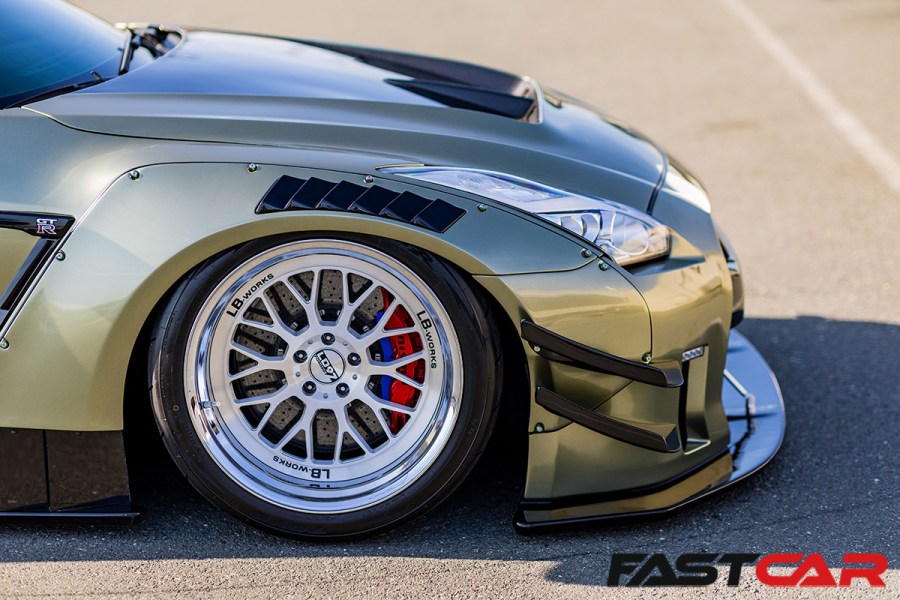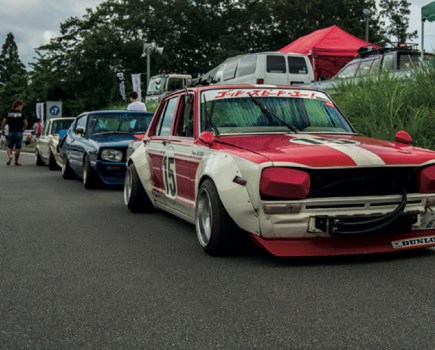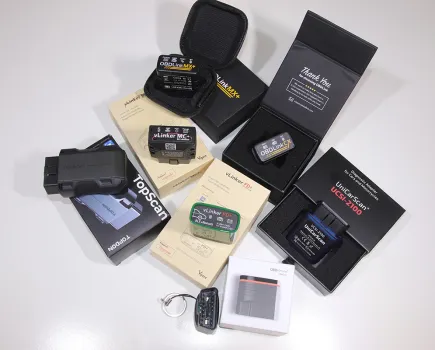They don’t just make your car look pretty; the right set of alloy wheels will give numerous performance advantages too. Here’s our guide to offsets, sizes, and the difference between forged, flow-formed and split-rims.
As we all know, the right aftermarket alloy wheels can make a modified car. Likewise, fit the wrong ones and you’ll undo all the previous hard work that’s gone into making the car look and perform better. But with the right rims in place, you can improve the overall appearance of your car. You can also make significant improvements to the way it handles, accelerates and brakes.
Wheel design has much more of an impact on performance than many people give credit for. Everything from the car’s unsprung weight to the cooling efficiency of your brakes, to the geometry of your suspension setup, is affected by the wheels you fit. Therefore, fitting the right rims is essential for peak performance. Let’s take a closer look at exactly what’s involved when changing your alloy wheels.
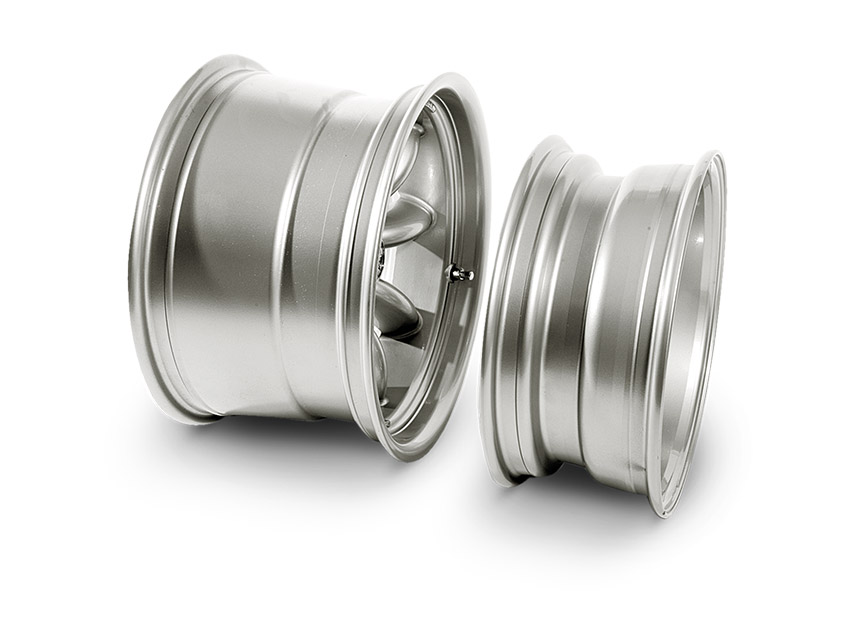
Your Guide To Alloy Wheels
Sizes & Fitment – What Is PCD?
Let’s start with the most obvious aspects. Diameter is fairly self-explanatory and refers to the outside diameter of the rim. Width is equally self-explanatory but is actually measured from inside lip to inside lip, not the overall outside measurement. PCD refers to the bolt pattern of the wheel, and ultimately which cars it will fit. The center bore of a wheel is the diameter of the hole in the back that fits onto the flange on the hub.
Larger diameter wheels are considered more aesthetically pleasing than smaller rims. However, the primary reason they are used is often due to the fact that bigger wheels are needed to go over bigger braking systems. Similarly, wider wheels look more aggressive and fill the car’s arches better. However, the main advantage is that they allow you to fit a wider tire for increased grip levels.
The PCD and center bore refer to fitment. PCD stands for ‘pitch circle diameter’. It is the diameter of the circumference of the center line of the drilling holes. Imagine drawing a perfect circle that goes to the center of all the bolt holes, then measure the diameter of the circle you’ve just drawn. That’s the PCD.
The center bore of a wheel is the diameter of the hole in the back that fits onto the flange on the hub. Most modern wheels are hub-centric. This means that the center bore will fit tightly onto the hub, transferring the load onto that component. With this setup, vibration is massively reduced. The studs or nuts do nothing other than hold the wheels on. It’s not uncommon for mass-produced aftermarket wheels to feature a larger-than-required center bore size, which is then shimmed back to the required size using plastic spigot rings.
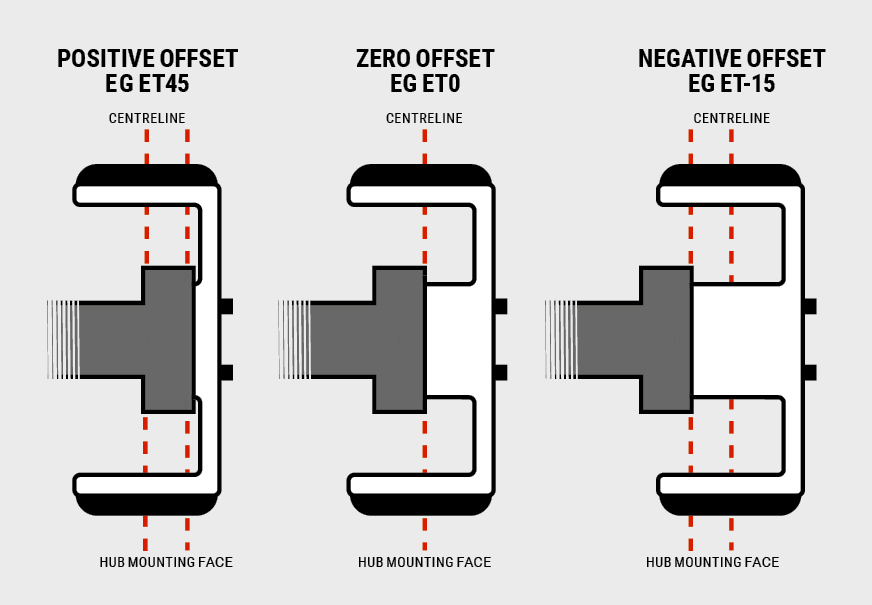
Offsets On Alloy Wheels
The offset of a wheel not only dictates whether or not it will physically fit a particular application, it is also crucial to the handling properties of a car. Although it can sometimes confuse people, offset is quite straightforward. The easiest way to understand it is to draw an imaginary line directly down the centerline of the wheel. If the hub mounting face is directly on this line, the wheel has a zero offset. This is measured as an ET number, in this case ET0.
If the mounting face is nearer the outside face of the wheel, the offset is positive. Whereas if the mounting face is nearer the inside edge of the wheel, the offset is negative. The offset is measured in mm, as the distance between the centerline and the mounting face. For example; an ET45 wheel has the mounting face offset from the centerline by 45mm, towards the outside face of the wheel. An ET-15 wheel has the mounting face offset from the centerline by 15mm, this time nearer to the inside edge of the wheel.
Changing the Offset
Changing the offset of your wheels can have a huge effect on the way the car looks and handles. Most people opt for a wider offset to increase the overall track width and for the aesthetics of a wheel that really fills the arches. But the standard wheels will be designed to work with the car’s suspension geometry. This would have been extensively tested and developed to dial out any unwanted characteristics such as bump steer, understeer or torque-steer issues. By changing the offset – and therefore altering this geometry – you can introduce those issues back onto the car.
In an ideal world you’d always look to increase wheel width equally either side of the centerline to ensure the offset remains the same. However, this is not always possible when you have things such as brake caliper clearance, damper positioning, or simply the size of the wheelarch to contend with. In these cases, it comes down to a compromise between wheel width and available offsets.
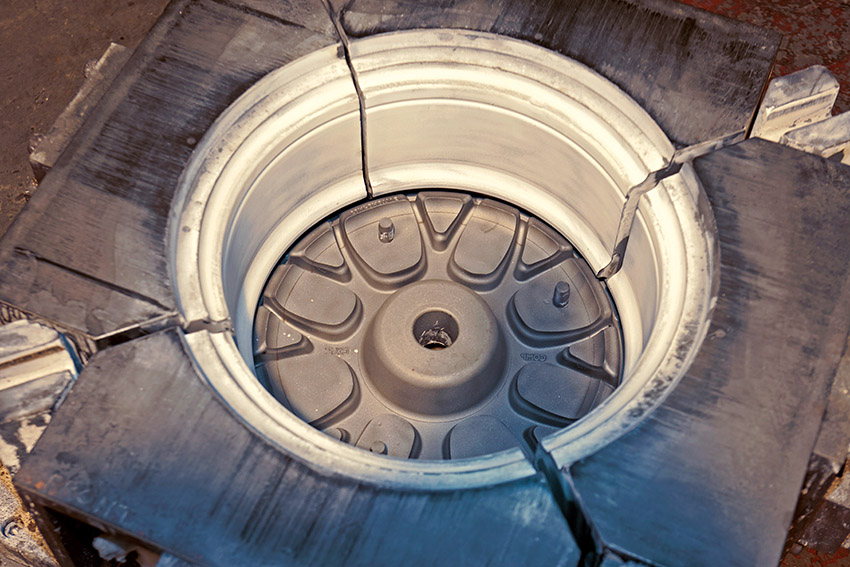
Casting is the most common method for producing alloy wheels
Cast Alloy Wheels
Another crucial factor for performance and handling is how the wheel is constructed. Some motorsport wheels are made from various exotic alloys such as magnesium or even composites like carbon fiber. However, for most applications, wheels are generally made from aluminum alloys.
The exact content of the alloy can be altered to change its properties, such as making it softer or harder. That being said, the biggest differences are usually found in the way the wheel is made. Traditionally, alloy wheels are cast. This process involves pouring the molten alloy into a mold and allowing it to cool. Once cooled, the mold is opened, and the cast wheel removed. There is an alternative casting process called negative pressure casting, which works in a similar way. Rather then pour the molten alloy into the mold, it is drawn up into the mold using a high-pressure vacuum. This eliminates the trapped gas that can sometimes occur as a result of the gravity casting process.
Flow Formed Wheels
A more recent technique is a process called flow forming. It sits neatly in between the casting and forging processes. It produces a wheel that is lighter and stronger than a traditional cast alloy wheel but not as expensive as a forged wheel.
The process of flow forming involves spinning the wheel after it has been cast, with pressure then being applied to the inner barrel of the wheel while it is spinning. This stretches and compresses the alloy, increasing the wheel’s tensile strength and shock resistance. The finished wheel is lighter and stronger than a traditional cast alloy and has a higher load capacity too.
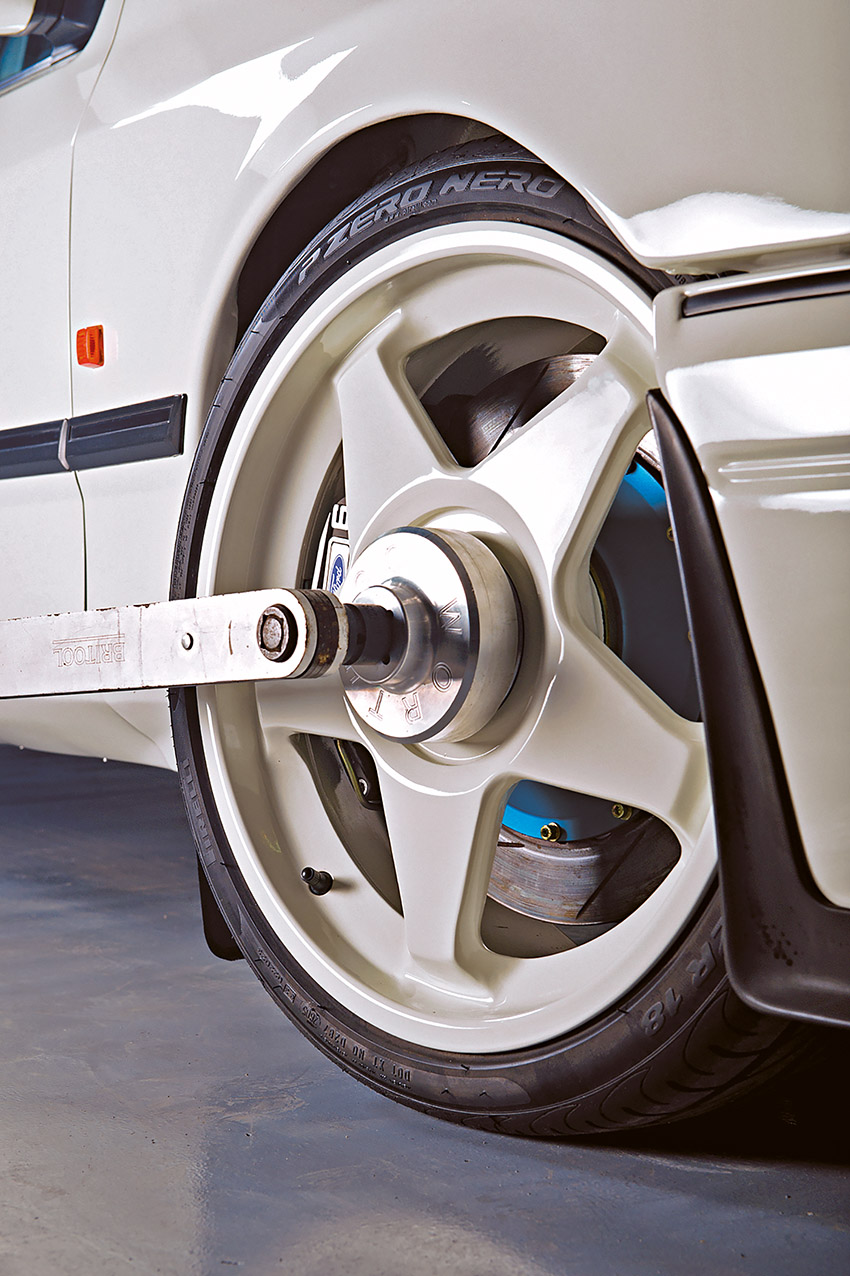
Forged Alloy Wheels
Forging doesn’t involve melting the alloy to a liquid state. Instead, the process uses intense heat (to make the alloy malleable enough) and enormous pressures to effectively push the alloy ingot into the shape of a wheel.
One of the main advantages of the forging process is the way it affects the alloy material’s grain structure. The starting ingot would have been cast. As such, the grain structure will be non-directional. Effectively, the grain structure will be as it landed when it was poured during the casting process.
But with the huge pressures of the forging process pushing the material in the direction we want it to be, we cause this grain structure to line-up to provide increased strength. It also means that the grain structure can be forced to run from the center of the wheel outwards, along the length of the wheel’s spokes and not all in the same direction (top to bottom, for example). This is part of the reason why a forged alloy wheel can be as much as 300 per cent stronger than a regular cast alloy wheel.
When the forging process has forced the alloy into a wheel-shaped blank, the blank can be machined into the final product.
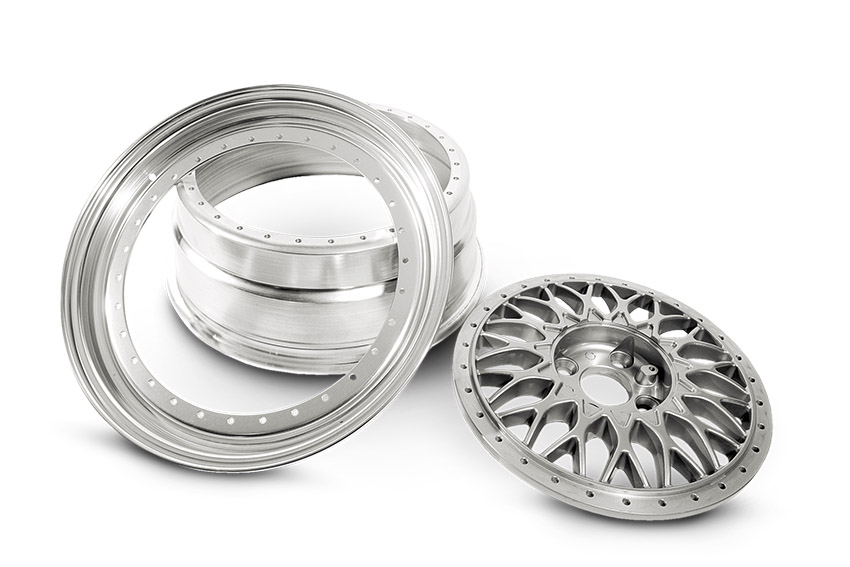
Split-Rims
Split-rim designs originate from motorsport in the Sixties, when limitations to the casting process meant it was only possible to produce a wheel around 6in wide. To overcome the problem, manufacturers used a cast alloy center (modern wheels can use a center CNC-machined from billet alloy) and then bolted on spun-aluminum inner and outer rims to form a three-piece wheel. By using different-sized inner and outer rims, it was easy to alter the width and offset of the wheel just by bolting on different spun-aluminum sections.
It’s also possible to have a two-piece split-rim. This is where the center also includes the inner or outer lip as part of the same piece. A spun aluminum outer or inner (sometimes cast) is then bolted to the center to form the completed wheel.
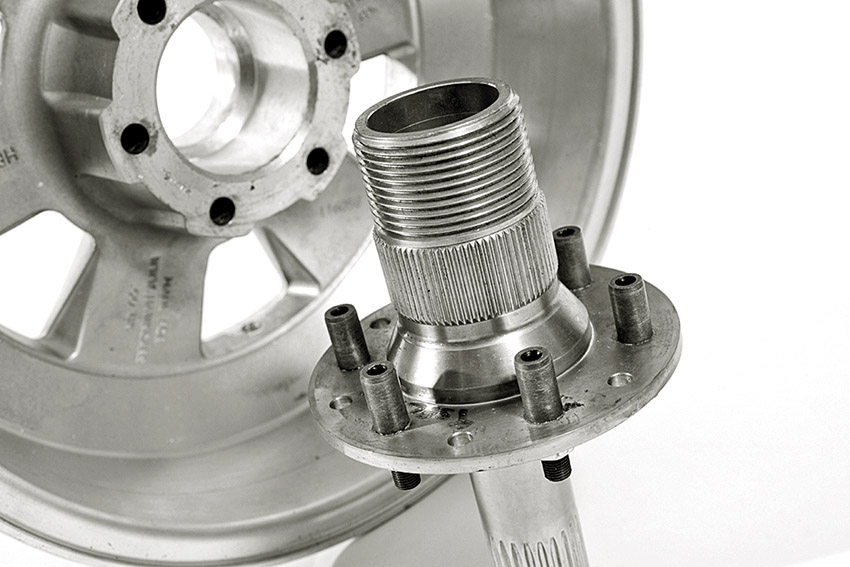
Centre-lock rims use drive-pegs in the hub face to provide drive to the wheels
Centre-Locks
Unlike conventional wheels, center-lock rims don’t take their drive from the wheel studs. Instead, they feature either a splined center or drive-pegs that slot into the back of the rim. A center-locking nut then holds the wheel to the hub. This allows for a very precise and very quick wheel change. As a result, it makes them ideal for motorsport applications.
Check out which is the best alloy wheel cleaner in our test.

